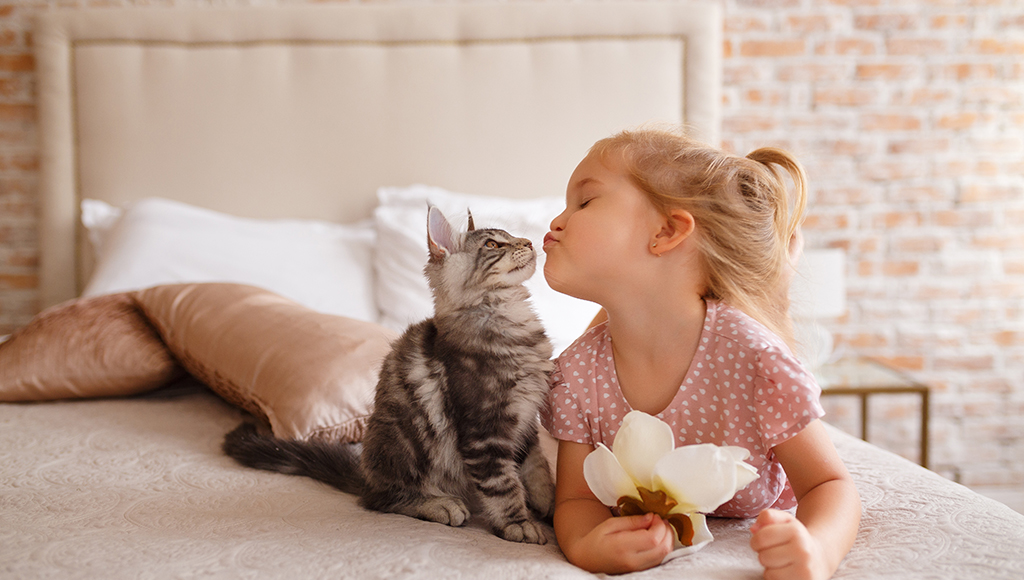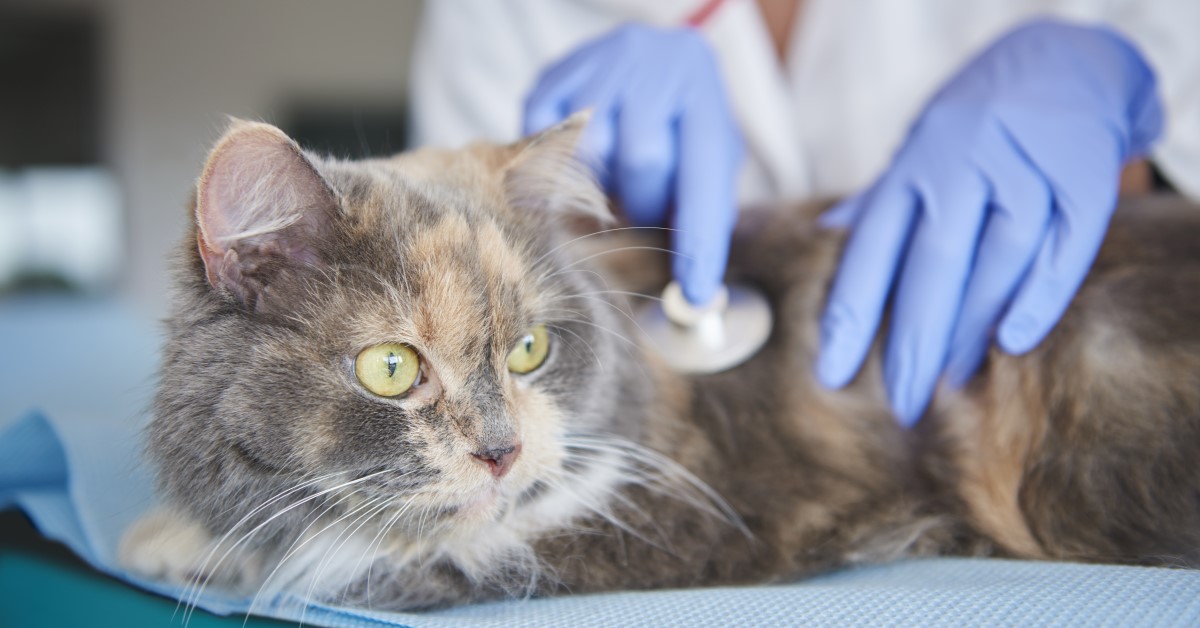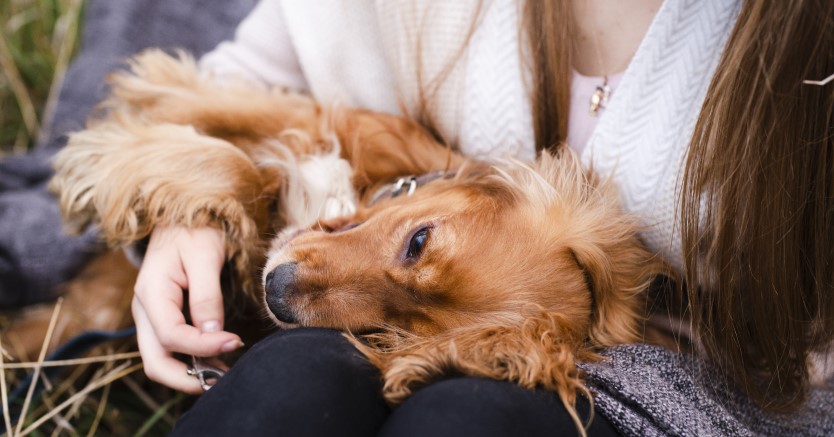Caring For Pets Teaches Children Responsibility
Learning to care for pets is a great way to make children not only more responsible, but also empathetic to the needs of others.

Pets are the perfect way to teach your children about responsibilities. All children love to have a pet of their own, but to make them actually take care of that pet, feed it and cleanup after can be difficult. Often, the pet is not age-appropriate, which makes the task of caring for it more difficult than it should be. The first important step is to choose a pet that is suitable for your child’s age. A young child, such as a 4-year old surely won’t be able to take care of a large dog, but would do better with a guinea pig or a kitten. A child under the age of four is still learning the basics himself, so trying to teach him how to also take care of a pet might be too much to learn for someone so young.
For Younger Children
If you already have a family pet, your child is already familiar with all the pet-related routines such as feeding it, walking it, and even cleaning up after it. The next step is to explain to the child that one of those jobs is now going to be their responsibility. Make sure you pick something that your child can actually do without any harm to himself or the pet, and without difficulty. For example: Making a young child clean the cat’s litter box is pretty dangerous. Younger children put their fingers inside their mouths or in their eyes a lot, so this would be a better job for an older child. A good example of a risk-free responsibilities would be giving fresh water to your family’s pet every day.
One thing to keep in mind when trying to teach your child responsibility by caring for the family pet is to make sure you don't overwhelm the child all at once. Giving too many responsibilities can have the negative affect of causing the child to resent the pet. Remembers to let the amount of pet-related responsibilities grow with the child. Little by little, you can let your child feed the pet and walk it. With more responsibility, your child will also feel more valuable and his self-esteem will grow.
Having pets is a great way to make children not only more responsible, but also empathetic to the needs of others. By nature, children are focused mostly, if not exclusively, on their own needs, so having to take the time to care for a pet will have a great influence on their personality, as well as teach them to focus on others' needs too. You can ask, for example, for your child to pay attention to the pet’s mood and let you know if the pet seems sad or sick, so the two of you can take it to the vet. This exercise may seem simple, but it teaches your child a very important lesson – to be sympathetic with other people’s needs and feelings.
For Older Children
For older children who want their own pet, it’s extremely important to discuss his or her responsibilities before actually getting the pet. Explain to your child that a pet is not a toy, and it has to be fed and cleaned up after on daily basis, just as you would not skip caring for them on days you were tired or too busy. More importantly, make sure your child understands that a pet needs attention and cannot be ignored just because he or she is tired or in a bad mood.
If your child is older than six, you should allow them to pick their own pet, whether it’s a dog, a cat or a guinea pig. However, before the trip to the pet shop, it would be wise to take a trip to your local library or bookstore to get a book about the pet your child has chosen. Ask your child to read the book and then share the information from the book with you. Take note of his willingness to do so, as well as just how thoroughly he understands the information in the book. If he doesn't pay much attention to the book's contents, or breezes over it in just a few moments, chances are this is a good indicator of how he well he will take care of the pet. This doesn't mean he doesn't truly want it, but the excitement of the pet, along with the energy put into taking care of it, tends to fade fairly quickly.
Make sure that your child understands all the new pet responsibilities they will have; and there are more responsibilities with some pets than with others. If your child wants a dog, explain to him that a dog needs to be fed twice a day, have clean water, get daily walks and receive a lot of attention in order to be healthy and thrive. Once the type of pet has been chosen, sit down and create a list of all the responsibilities involved in the care of your pet and talk with your children about what tasks they feel they can handle on their own. It’s better to give a child an easy daily pet responsibility than a difficult one that occurs less frequently. Once again, always remember to give a task that is well within a child’s capabilities or feelings of frustration will taint the child/pet relationship, and the family pet will soon become a source of frustration rather than a source of joy. It helps to explain to your child exactly why the responsibility you’ve given them is important to the pet’s well-being, along with the consequences to the pet if the task is not done properly or neglected altogether.
Age-Appropriate Tasks
Toddlers – Age 5- Help parents put food and water in pet dishes, though parents should still be the ones to actively give food to the animals, especially in the case of dogs.
- Clean and put away pet dishes.
- Help put away pet toys and help with minor cleaning up (parent assisted).
- Help with brushing and grooming.
- Put food and water in dishes, still with parental supervision with dogs as they can become excited and nip and bite when food is involved. All other pets can be fed unsupervised.
- Help with cleaning and maintenance of pet areas, such as shaking out pet beds or rugs from kennels, sweeping pet areas, washing and cleaning pet dishes.
- Grooming and possibly bathing, depending on the pet’s size (parent assisted).
- Help with exercise and walking, depending on pet’s size (parent assisted).
- Cleaning up after a pet when it goes to the bathroom, with parent making sure the child washes his hands thoroughly afterwards.
At this age, all aspects of pet care can be responsibly assumed unless you have a very large dog. Your child should be taking on full care of cleaning up the pet’s bathroom area (shoveling feces in the yard), which will always be one of the hardest tasks to get a child to do.
Encouragement Reinforces Responsibility
When you first get your family pet, make sure to praise your child every time a pet chore is performed without being prompted to do so, no matter how big or how small the task. Try to reward your child in some small way with a fun pet activity that brings feelings of love and connection with the pet. Whenever possible, it’s best to praise and reward immediately after the task has been done for the strongest positive reinforcement. A great trick for younger children is to enthusiastically praise your child in a happy tone of voice talking to the pet while the child is in the room. This works especially well with dogs, which bounce around excitedly, making the child even happier.
As time goes by and your child gets used to the responsibilities of caring for a pet you can ease off the continuous praise, but be sure to make a point of congratulations from time to time on being such a caring and loving pet owner.
When Responsibility Starts to Lapse
Constant gentle reminders are the best way to get children under the age of 12 to get into the practice of thinking responsibly. As frustrated as you may feel, don’t make kids feel guilty about their inconsistent caring for the family pet. Most children are still perfecting the art of keeping with their own personal routines and fulfilling responsibilities, so too much criticism will simply instill feelings of failure in themselves or anger towards the innocent pet that unwittingly made the child a focus of complaint. This is unhealthy for both the child and the pet and rarely solves the problem.
If there are constant missed feedings or cage cleanings, sit down with your child and cheerfully offer to help them figure out what’s not working and how it could be handled more efficiently. Sometimes making signs together and putting them on the door to your child’s room or other noticeable places around the house can be a good reminder. Remember, your child may have started a new activity in school which leaves them less time or there is something in their lives which conflicts with pet care as it is currently set up. Sometimes all that is needed is a small adjustment in the schedule and timing of things to make it work. Be patient. If the discrepancy can’t be worked out during the week and you need to assume extra responsibilities for them, talk about having your child do additional pet chores on the weekends when there is more time to handle it effectively.
Summary
Remember, the best way to teach your children how to be responsible pet owners is to show them by setting a good example as one yourself. When you are having a busy day, make sure you still make time to walk the dog or brush the cat, drawing your child’s attention to this fact in a positive way. With patience, persistence and positive reinforcement, children start to pick up on what a good owner you are and will be compelled to follow.
Ready to start saving money on pet wellness care?
Then take a look at Mint Wellness, the pet wellness plan that provides fast reimbursement on routine pet care. Save on vaccinations, wellness exams, preventatives, dental, and more!
Learn More


